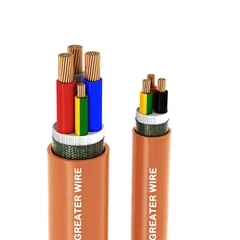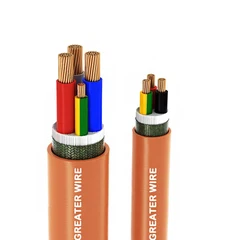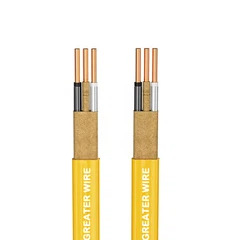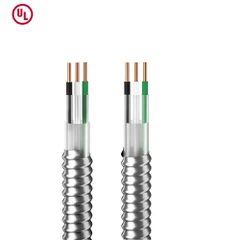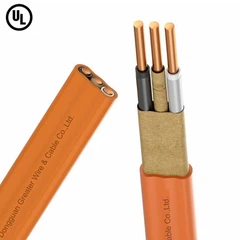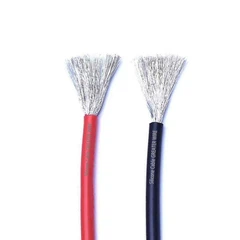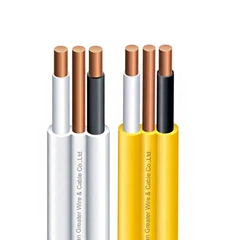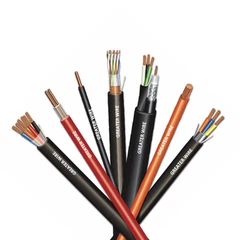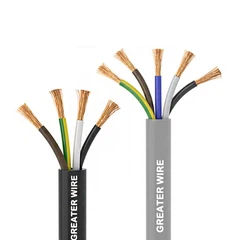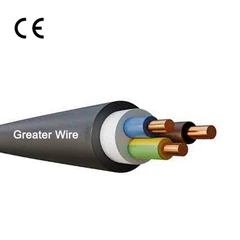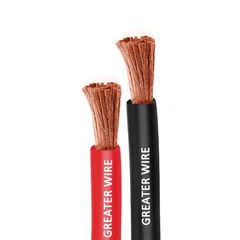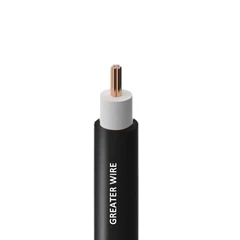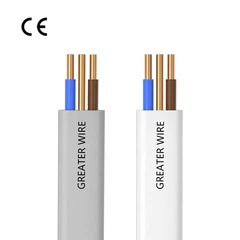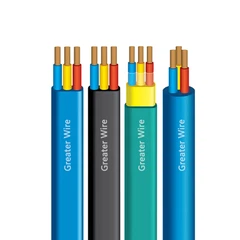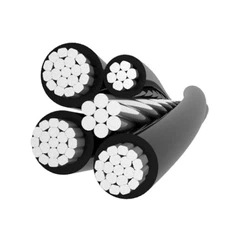UF-B cables, also known as uf b underground feeder cable, are widely used for outdoor and underground electrical installations. Their durable, water-resistant design makes them ideal for powering outdoor lighting, appliances, and garden equipment. However, working with UF-B cables requires proper techniques, especially when stripping them.
1. What is UF-B Cable?
UF-B cable is a type of electrical wire designed for direct burial and outdoor use. The cable features solid copper conductors enclosed in a moisture-resistant, durable jacket that protects against weather, sunlight, and underground conditions.
Common UF-B Cable Types
8/3 direct burial cable: Suitable for higher current applications like large appliances.
12/2 UF-B cable: Commonly used for general outdoor circuits.
UF-B 10/3: Often used for larger outdoor installations.
UF-B 12/2 wire: Ideal for residential outdoor lighting and receptacles.
Applications
Underground electrical lines
Outdoor lighting and outlets
Garden and landscape power distribution
2. Tools Needed to Strip UF-B Cable
Stripping UF-B cable requires the right tools to ensure safety and precision. You will need:
Cable stripping tool or wire stripper
Utility knife (for careful jacket removal)
Side cutters or wire cutters
Safety gloves and eye protection
Safety Tip: UF-B cables are designed for outdoor and underground use, so avoid nicking or damaging the conductors when stripping the jacket.
3. Step-by-Step Guide to Strip UF-B Cable
Step 1: Measure and Cut
Determine the length of cable needed for your project. Cut the cable cleanly using a sharp cutter.
Step 2: Remove the Outer Jacket
Carefully use a utility knife or cable stripper to remove the outer UF-B jacket. Avoid cutting into the copper wires underneath.
Step 3: Strip Individual Conductors
Once the outer jacket is removed, strip the insulation from each conductor using a wire stripper. For example:
12/2 UF-B cable: Strip about 3/4 inch from each wire.
8/3 direct burial cable: Handle carefully due to thicker wires.
Step 4: Inspect the Wires
Check each wire for nicks or damage. Damaged conductors can lead to electrical hazards.
Step 5: Prepare for Connection
Twist the stripped ends and connect them to outlets, switches, or junction boxes as required.
4. Tips for Handling Different UF-B Cable Types
Different UF-B underground feeder cable types have unique characteristics, and handling them correctly ensures both safety and efficiency. Here are some expert tips for working with common UF-B cables:
4.1 Understand Cable Gauge and Wire Count
12/2 UF-B cable: Flexible and easier to strip; ideal for general outdoor circuits such as garden outlets and lighting.
8/3 direct burial cable: Thicker and less flexible; requires a more robust wire stripper and careful handling to avoid damaging the conductors.
UF-B 10/3: Suitable for larger outdoor appliances; stripping requires precise measurement to avoid nicking the wires.
UF-B 12/2 wire: Common for residential outdoor use; easier to bend and strip but still requires care to maintain conductor integrity.
4.2 Use the Right Tools for Each Cable Type
For thicker cables like 8/3 direct burial cable, use a heavy-duty cable stripper.
For smaller cables like 12/2 UF-B cable, a standard wire stripper is sufficient.
Avoid makeshift tools that can damage insulation or copper conductors.
4.3 Handle the Outer Jacket with Care
UF-B cables have durable, weather-resistant jackets. Score the jacket lightly with a utility knife and peel it away slowly.
Avoid deep cuts that may nick the copper wires inside.
4.4 Adjust Stripping Length by Cable Type
Larger cables often require slightly longer stripping lengths to make secure connections.
For UF-B 12/2 wire, strip approximately 3/4 inch of insulation; for 8/3 direct burial cable, adjust according to connector specifications.
4.5 Inspect Conductors After Stripping
Always check for frayed or nicked wires before making connections. Damaged wires can compromise electrical performance and safety.
Pro Tip: When working with multiple UF-B cable types, label each cable after stripping to avoid confusion during installation. This is especially helpful when handling UF-B 10/3 and 8/3 direct burial cable in complex outdoor projects.
5. Safety Precautions When Stripping UF-B Cable
Stripping UF-B underground feeder cable requires careful attention to safety to prevent injuries and electrical hazards. Follow these precautions to ensure a safe and efficient process:
5.1 Turn Off Power Completely
Always ensure the circuit is completely de-energized before handling any UF-B cable. Use a voltage tester to confirm no live current.
5.2 Wear Protective Gear
Use insulated gloves and safety glasses to protect your hands and eyes from sharp wire edges and accidental slips while stripping the cable.
5.3 Use Proper Tools
Only use tools designed for UF-B cable or direct burial cables, such as cable strippers, wire cutters, and utility knives. Avoid using improvised tools that can damage the cable or injure you.
5.4 Avoid Nicking the Conductors
When removing the outer jacket, carefully cut around it without nicking the inner copper wires. Damaged conductors can lead to short circuits or electrical failures.
5.5 Work in a Safe Environment
Ensure your workspace is dry and free from obstructions. Avoid standing on wet surfaces when handling 8/3 direct burial cable, 12/2 UF-B cable, or similar types.
5.6 Follow Local Electrical Codes
Comply with local regulations for underground and outdoor wiring installations. Proper adherence ensures safety and long-term reliability of your installation.
5.7 Inspect Before Connection
After stripping, always inspect the wires for damage, frayed edges, or exposed strands before connecting to outlets, junction boxes, or fixtures.
Whether it is underground wiring, building wiring, or industrial control wiring, Dongguan Greater Wire & Cable Co., Ltd.has mature and stable UL cable products to choose from. We always insist on winning the market with quality and winning customers with service. Dongguan Greater Wire & Cable Co., Ltd.is a high-quality UL wire Manufacturer. Welcome to send us your project requirements and enjoy customized technical support and international supply services.

